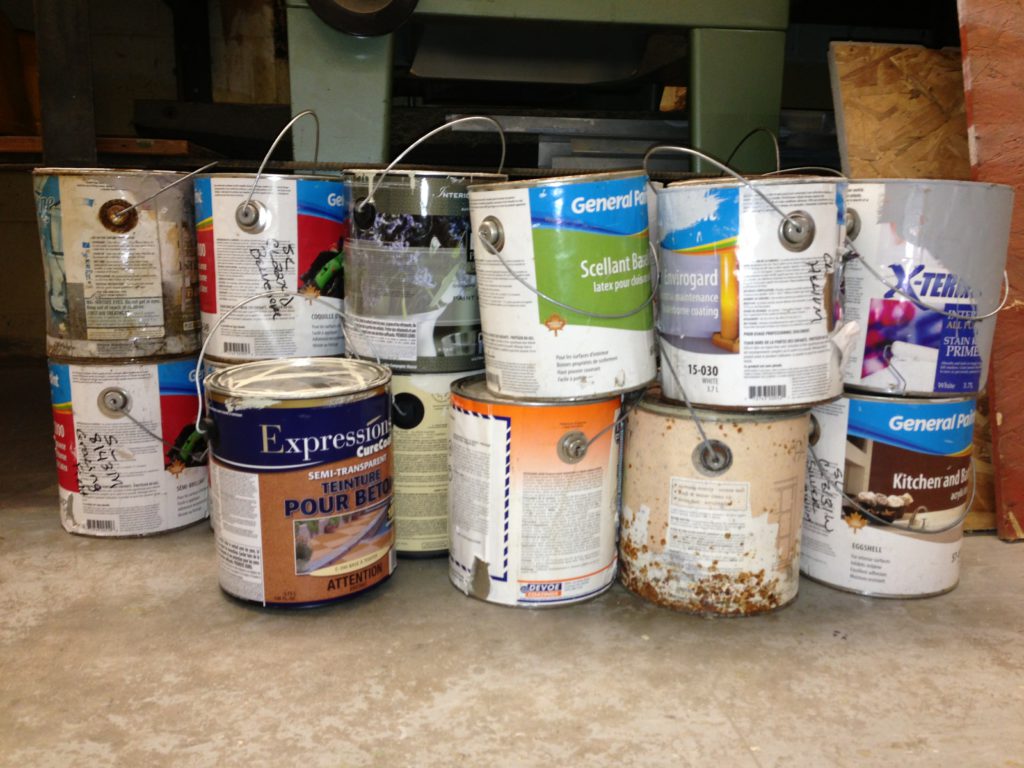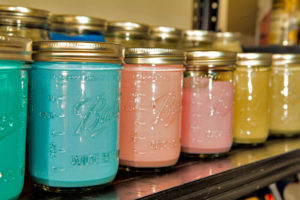
How Long Can My Leftover Paint Last In Storage?
After getting their home painted by us, in the future when our client decides it’s time to touch up their walls due to wear and tear. They dig out some leftover paint in hopes of reusing it and suddenly stop. They’re not sure it’s ok to use that paint or how they can tell if the paint is bad. Here are some things to consider before you try and use that paint.
First, we can tell you that interior paint can last a good while on your wall, depending on a number of things. The great news is that a quality paint job will last about a minimum of ten years. If there is heavy traffic in your home, or dogs, kids and parties, then it may age a bit faster. Most people end up repainting sooner not because of the paint chipping or fading but because they want to change the look of their home with a new color. So, now that we know how long paint lasts on your wall, now we need to know if our leftover paint is good to use again.
Storage:
Where was the paint stored since the last time you used it? It hopefully wasn’t kept somewhere with significant fluctuations of temperatures like an attic or garage that isn’t climatized. The worst place to store paint is somewhere it might freeze. The second worst place is extreme heat such as a non-climatized or non-insulated attic. The best place to store pain is somewhere climatized without severe swings in temperatures.

Tip:
If you want to keep some leftover paint for small touch-ups in the future, transfer it to a glass mason jar, label it, and store where it will not be subjected to weather fluctuations. Typically, that’s inside your home where it’s climatized.
Also you can consider leaving it in your non-climatized garage by storing it inside of a large cooler during winter and summer months.
Signs of damage:
Open up the cans and make sure there is no rust etc. in/on the can. If the can is pretty clean, stir the paint to test its’ consistency. If it stirs up well, you SHOULD be ok. It’s always a good idea to strain the paint into a clean can/bucket and then add some paint conditioner just to try to bring it back to life. It doesn’t always work by it is worth a try. Stir the paint conditioner into the paint really well. Then, stir, and stir and stir and stir, then stir some more. The solids can really settle. With this you will know if the paint is good to go or not.
If the paint has gone bad, it will look curdled like cottage cheese or overly thick like a pudding. If you dig out an old can of paint and you have either of these, it’s best not to use the paint and dispose of it properly.
To seal the can, place plastic wrap over the paint lid and hammer it down. Store in a cool, dry place away from sunlight and out of reach of children and pets. Once your paint is hard and lumpy, or if it has a particularly foul smell, it has probably gone bad and should be disposed.
Aside from consistency or texture, another way to know if the paint’s gone bad is just to smell it! If it smells unpleasant or you see mold, you will need to discard it (correctly). And, yes, mold can grow inside a paint can and be a serious health hazard if you put it up on your walls. However, if the paint has an ammonia smell, it’s still good. Give it a good stir and try it. Don’t forget to mix well and strain it before using.
How long?
Check the paint cans to identify when it was first mixed for you. We suggest also adding at least one more year to that date since it’s likely that there was a lag time between manufacturing the paint to when it arrived and ultimately sold. You’ll find that the higher the quality of the product, the longer it lasts and can be reused. Cheaper paints don’t last anywhere near as long as their more high-brow competitors.
Typically, you might get 5-10 years from latex paints and 10+ for oil paints. Anything more than that and you’ll likely need to buy new paint.
Disposing Of Old Paint
Since leftover paint can be hazardous, as it contains materials that can leak into the ground, cause physical injury to sanitation workers, or contaminate septic tanks, you have to be careful when throwing it away. Here’s what you need to know, and to think about, before disposing of paint.
“If you have to throw old paint out, you’ll want to dry it out first.”
Wet latex paint can be hazardous, so dry it up. If there’s only a small amount of paint in the bottom of your can, leaving it out in the sun should do the trick. If there’s a bit more than the sun can handle, try adding kitty litter or newspaper to help soak up the paint and speed the drying process. For larger amounts of paint, purchase a paint hardener, at a home improvement store for just a few dollars. Check your local laws, but in many locations, you can throw away dried-out paint with the rest of your household trash.
Can’t properly dispose of the paint curbside, let the professionals handle it.
Companies like Habitat for Humanity and PaintCare accept leftover paint in order to recycle it. You can also search for a hazardous waste drop-off facility in your area at Earth911.com.
If tossing it is not an option, try to donate it …
If you know you won’t use the paint for your walls again, try to recycle it or use it up. Ask a friend if they need some paint or use the leftovers to dress up an old stool or bookshelf. Call your local elementary school to see if they have any big art projects coming up, or search for green building companies that might accept extra paint. Habitat for Humanities ReStores, for one, takes latex paint. Or list it on a site like FreeCycle.org to see if anyone wants to take it off your hands.
If you need to dispose of old paint, contact your city/county for further details.
If you need some help with your paint project, Contact Us Today.

